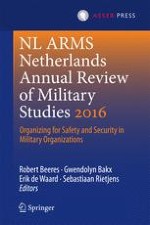2016 | OriginalPaper | Buchkapitel
17. Spanish Security Forces, Anti-terrorism and the Internal and External Security of Spain, 1959–1992
verfasst von : Michiel de Jong
Erschienen in: NL ARMS Netherlands Annual Review of Military Studies 2016
Verlag: T.M.C. Asser Press
Aktivieren Sie unsere intelligente Suche, um passende Fachinhalte oder Patente zu finden.
Wählen Sie Textabschnitte aus um mit Künstlicher Intelligenz passenden Patente zu finden. powered by
Markieren Sie Textabschnitte, um KI-gestützt weitere passende Inhalte zu finden. powered by
